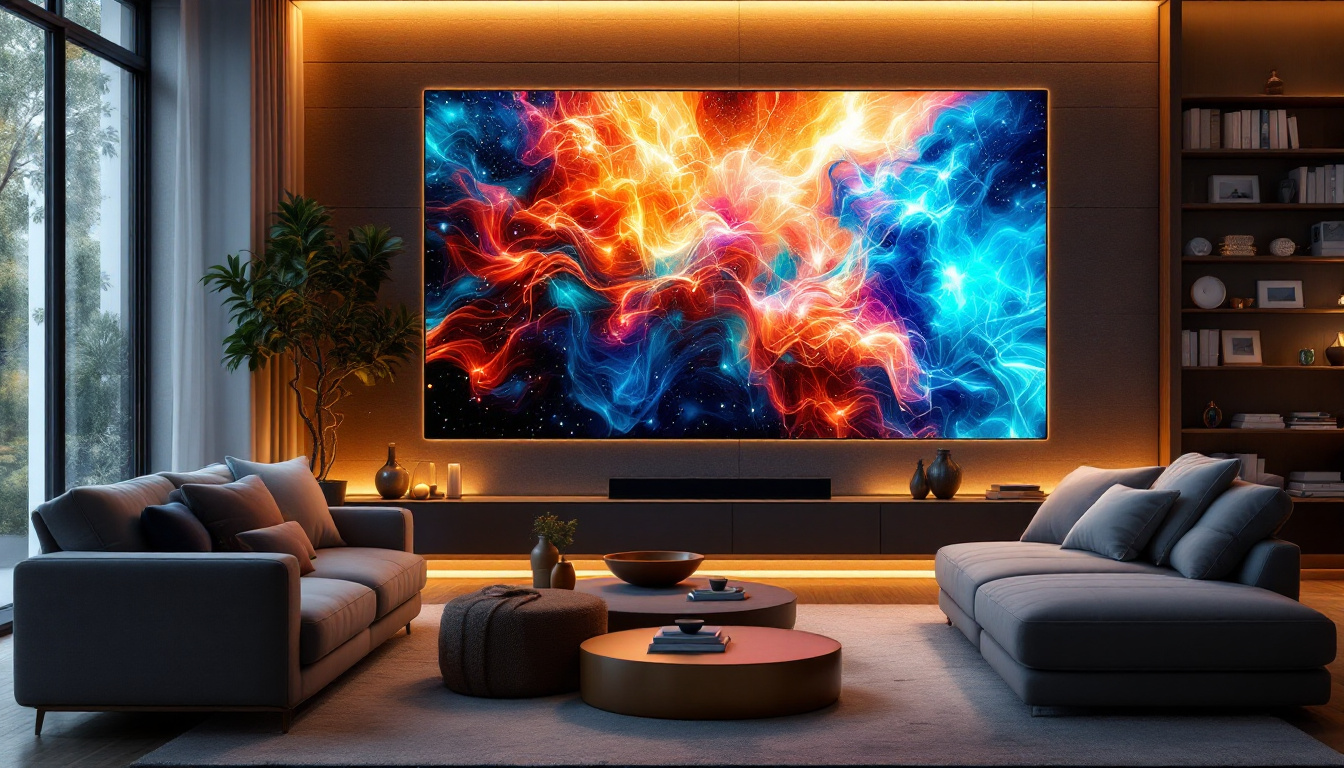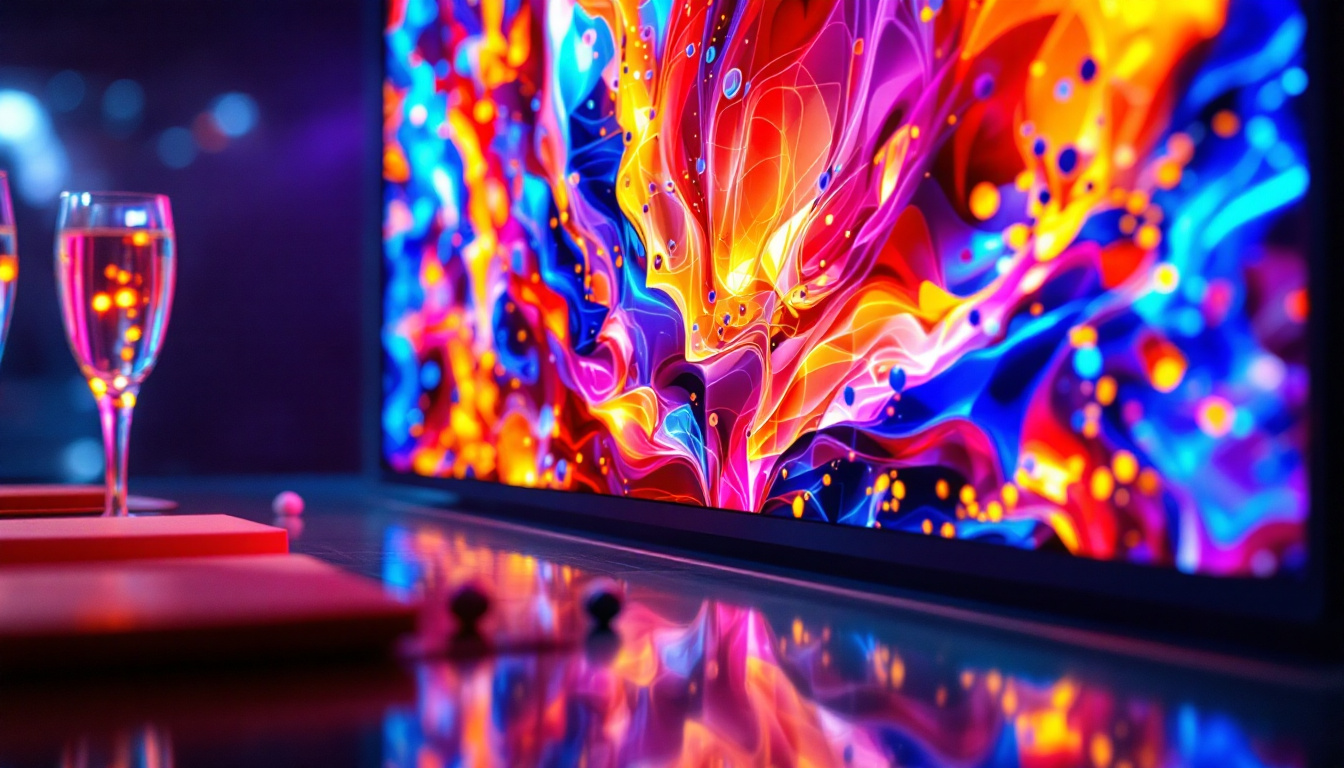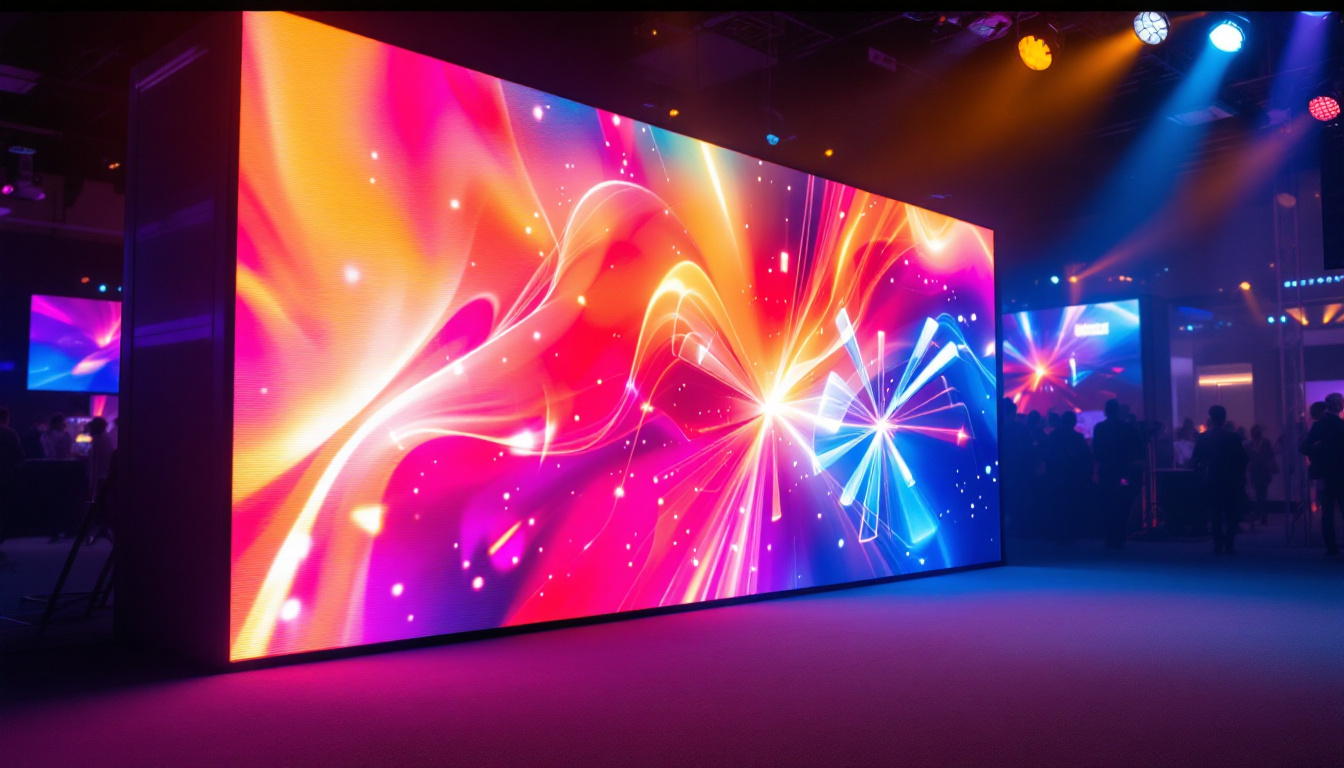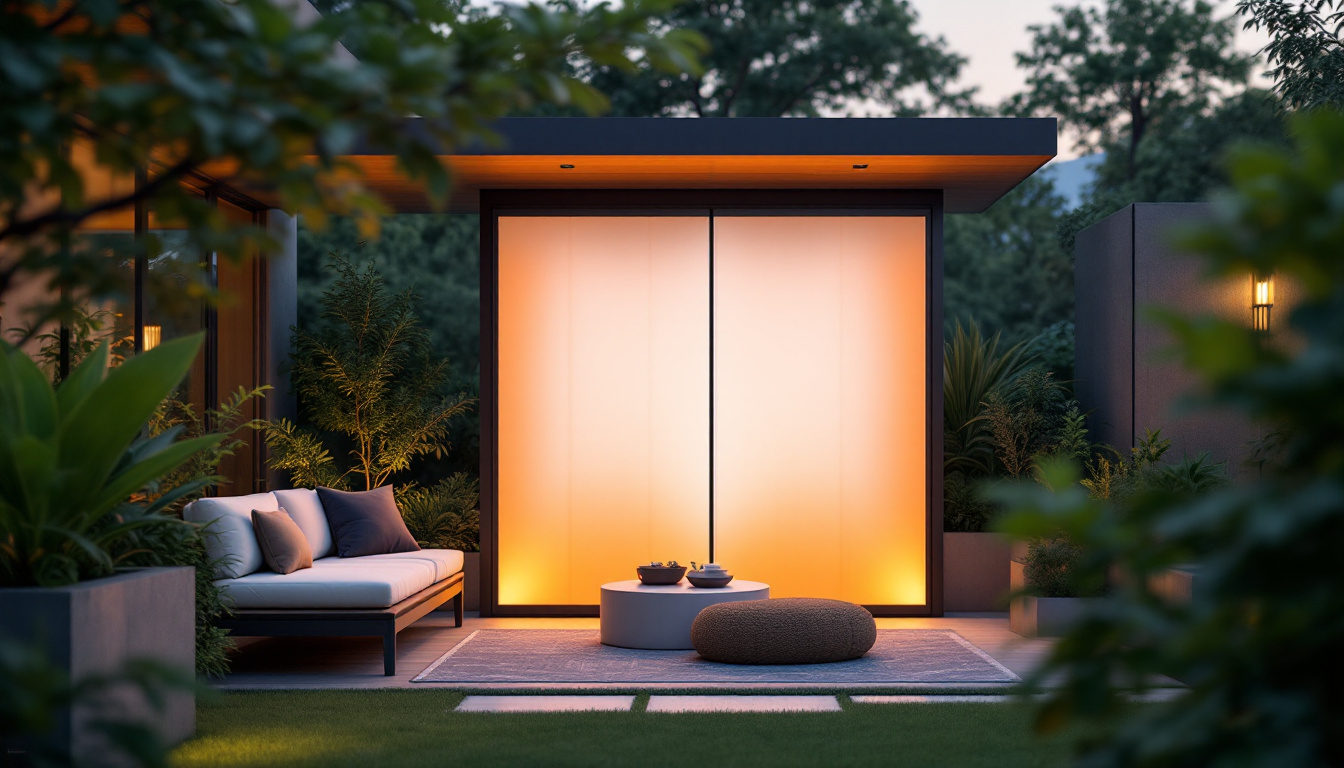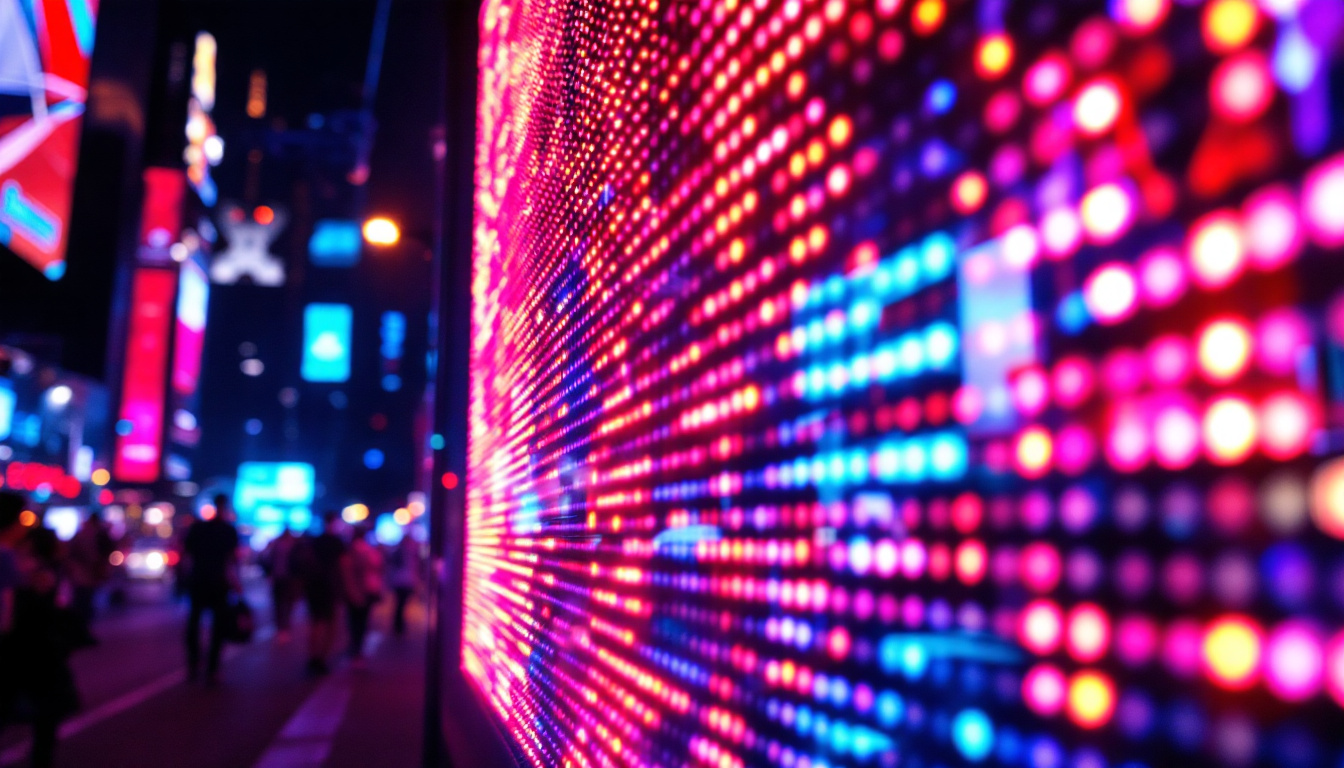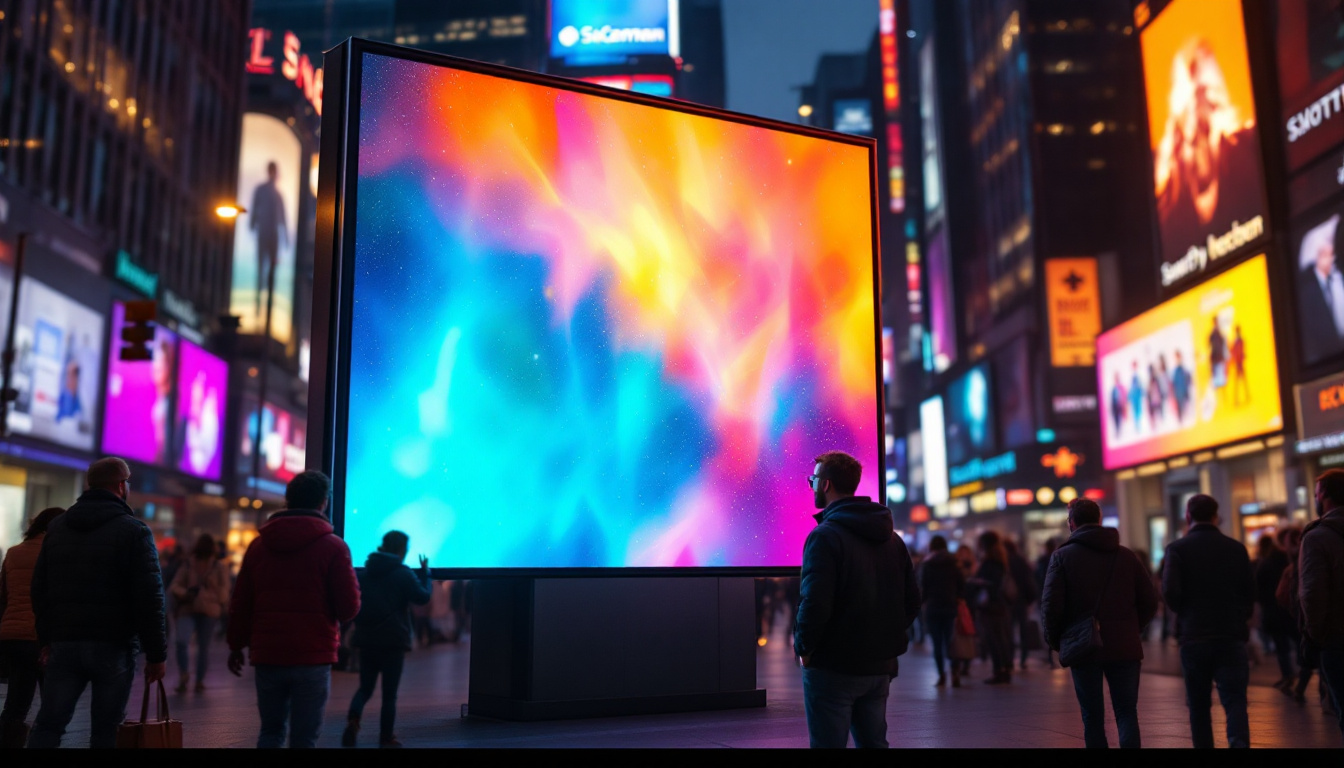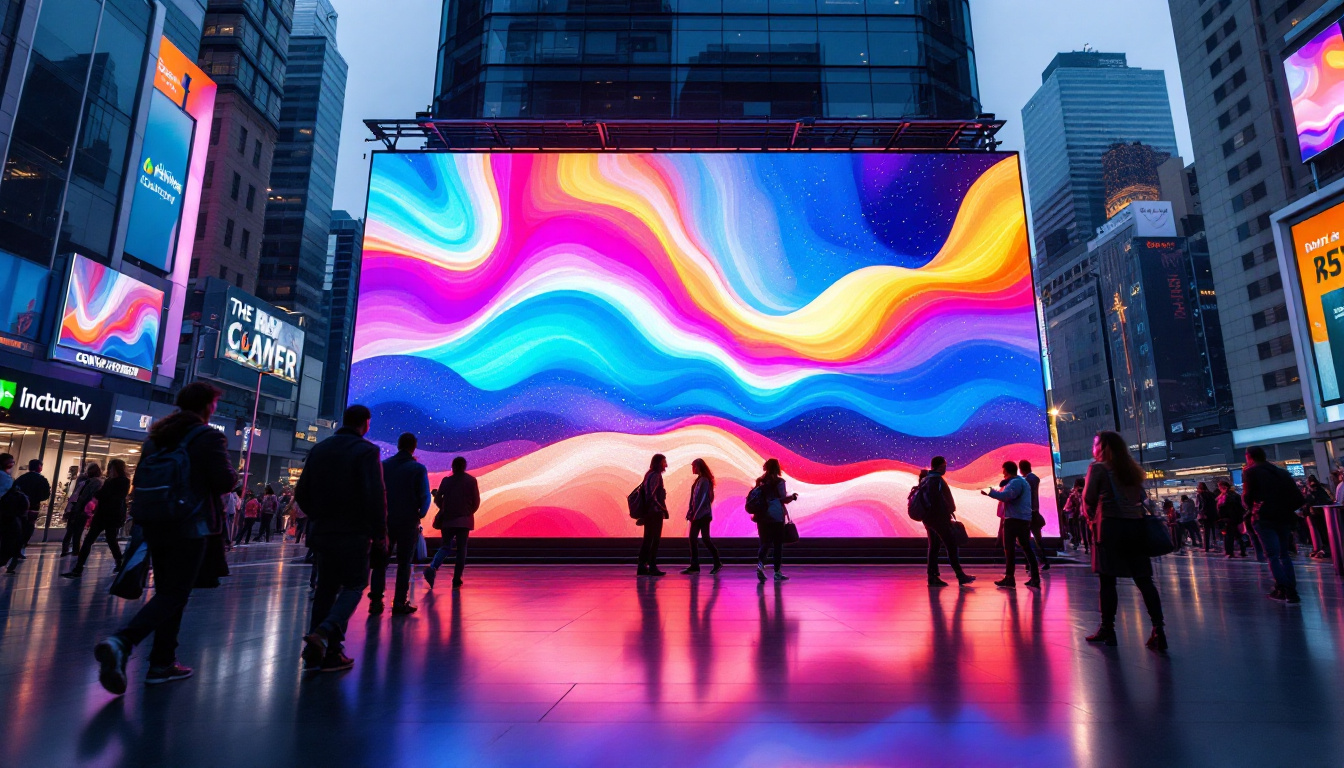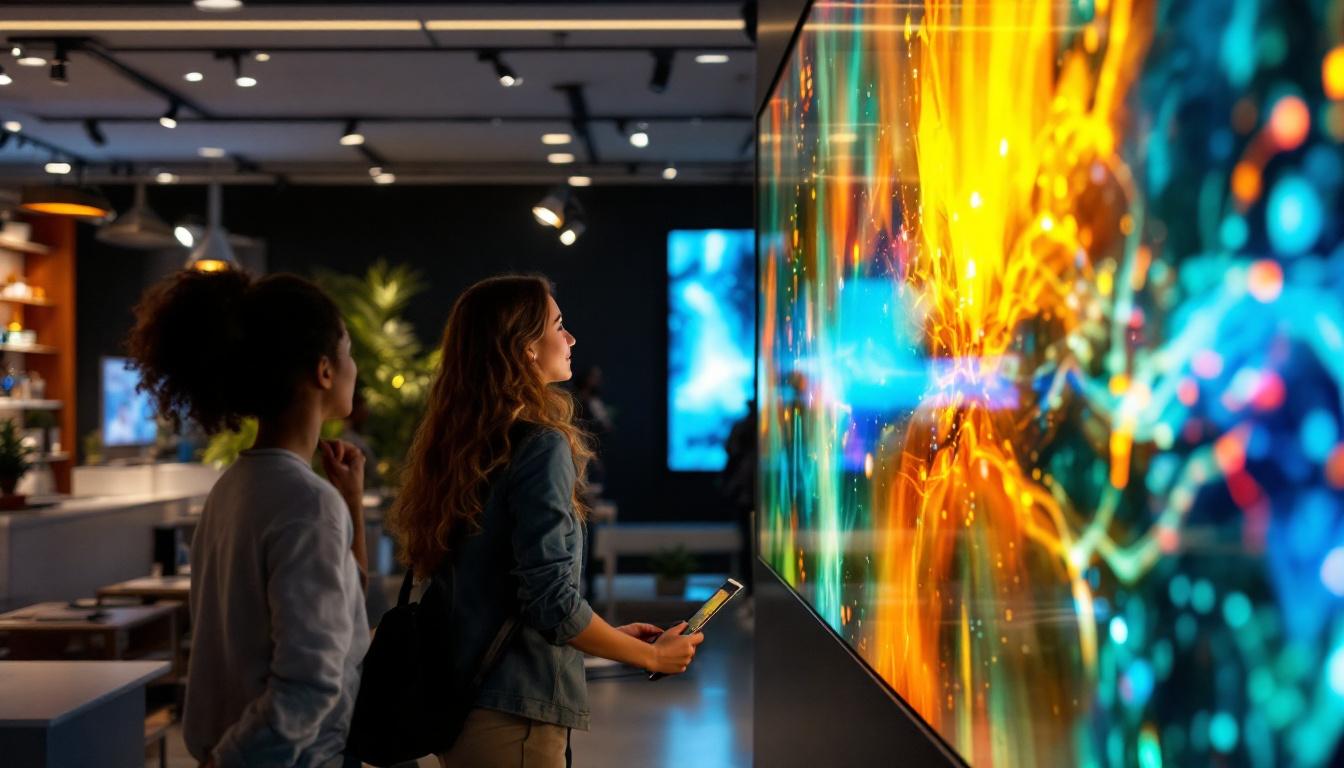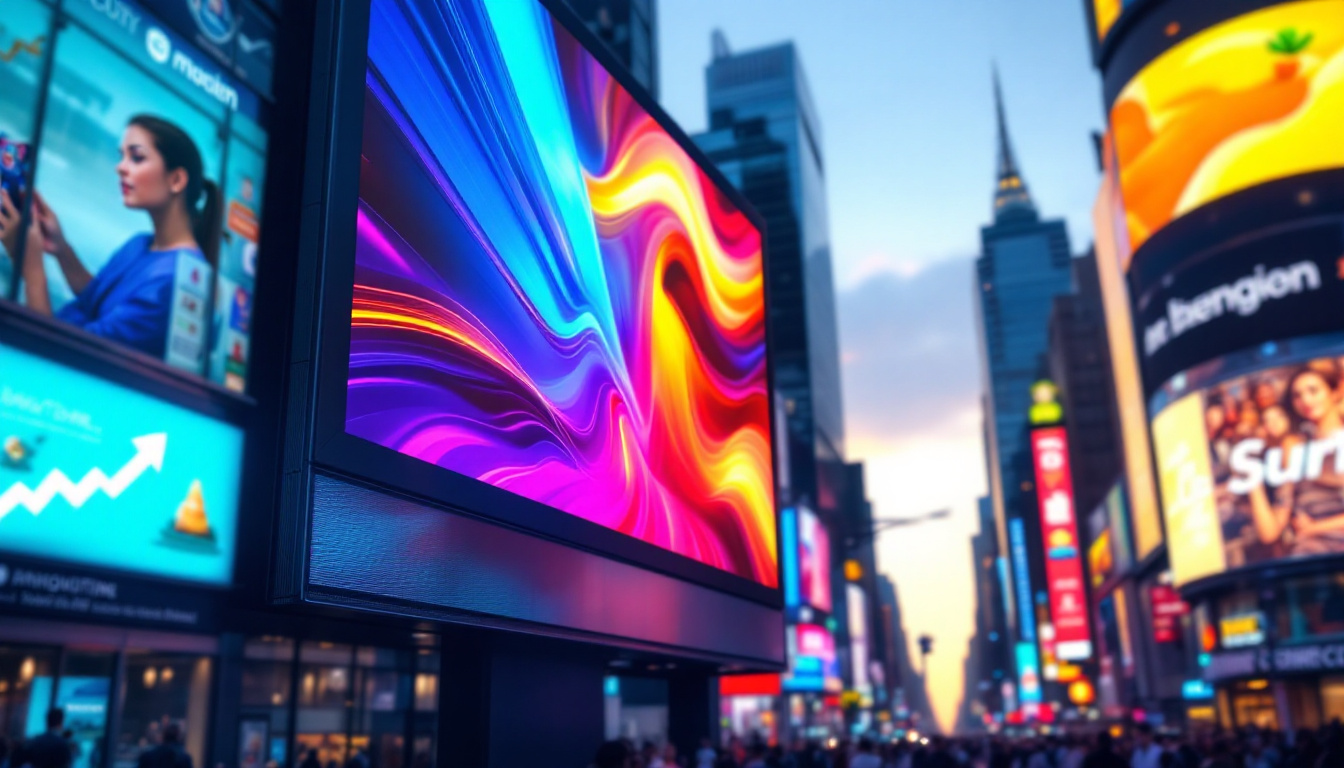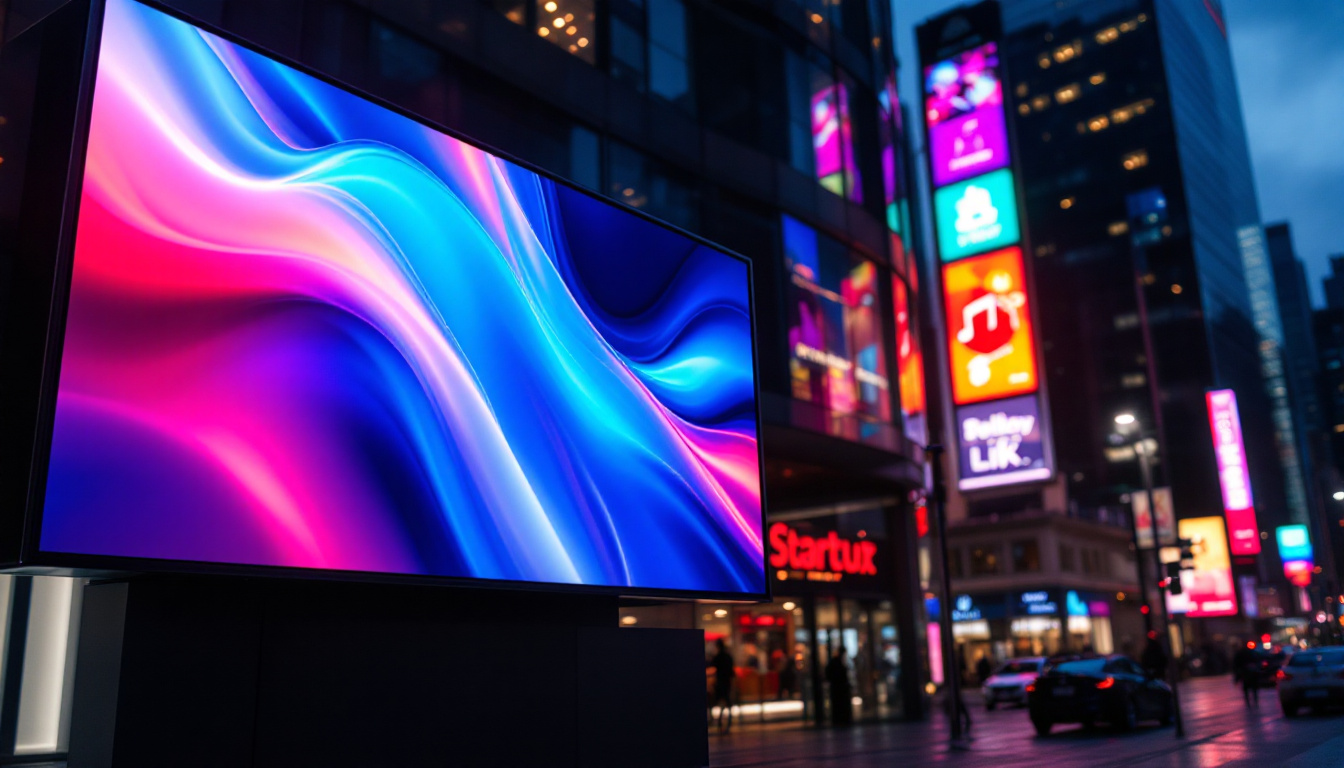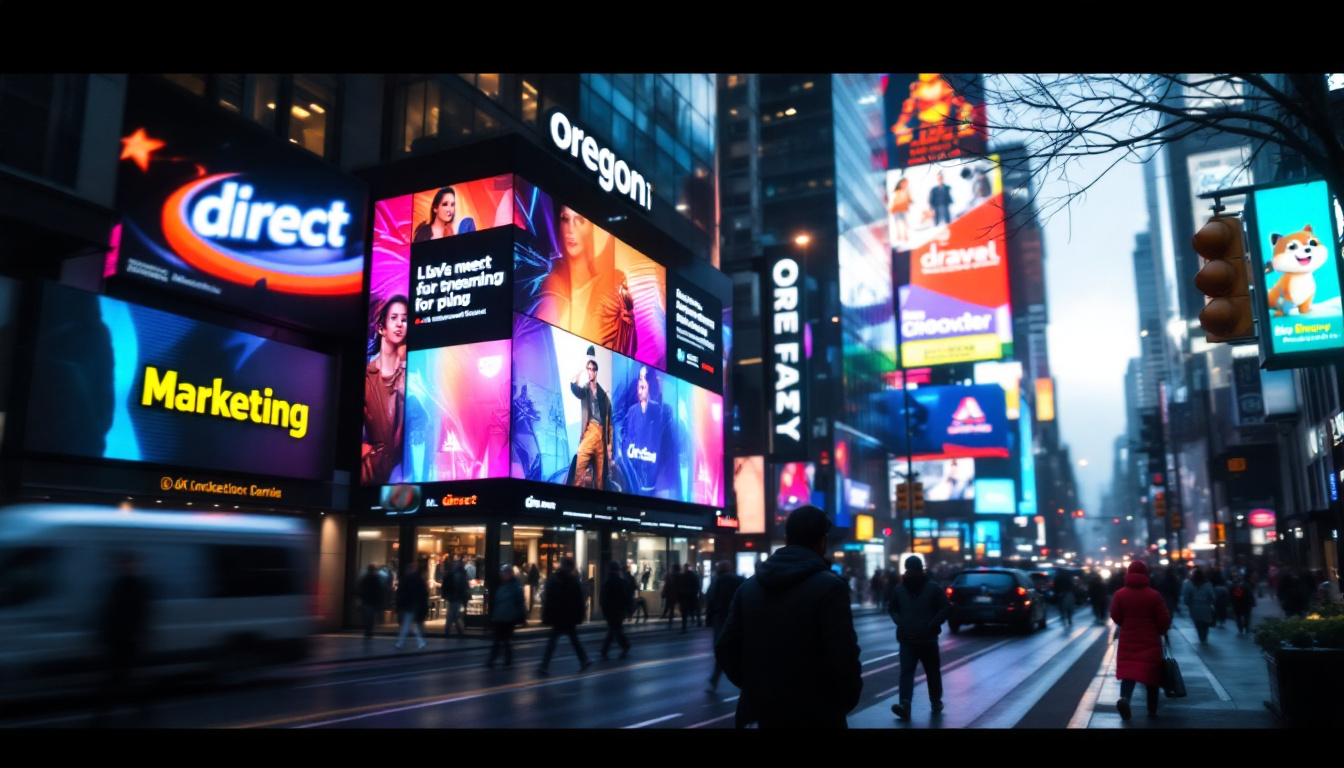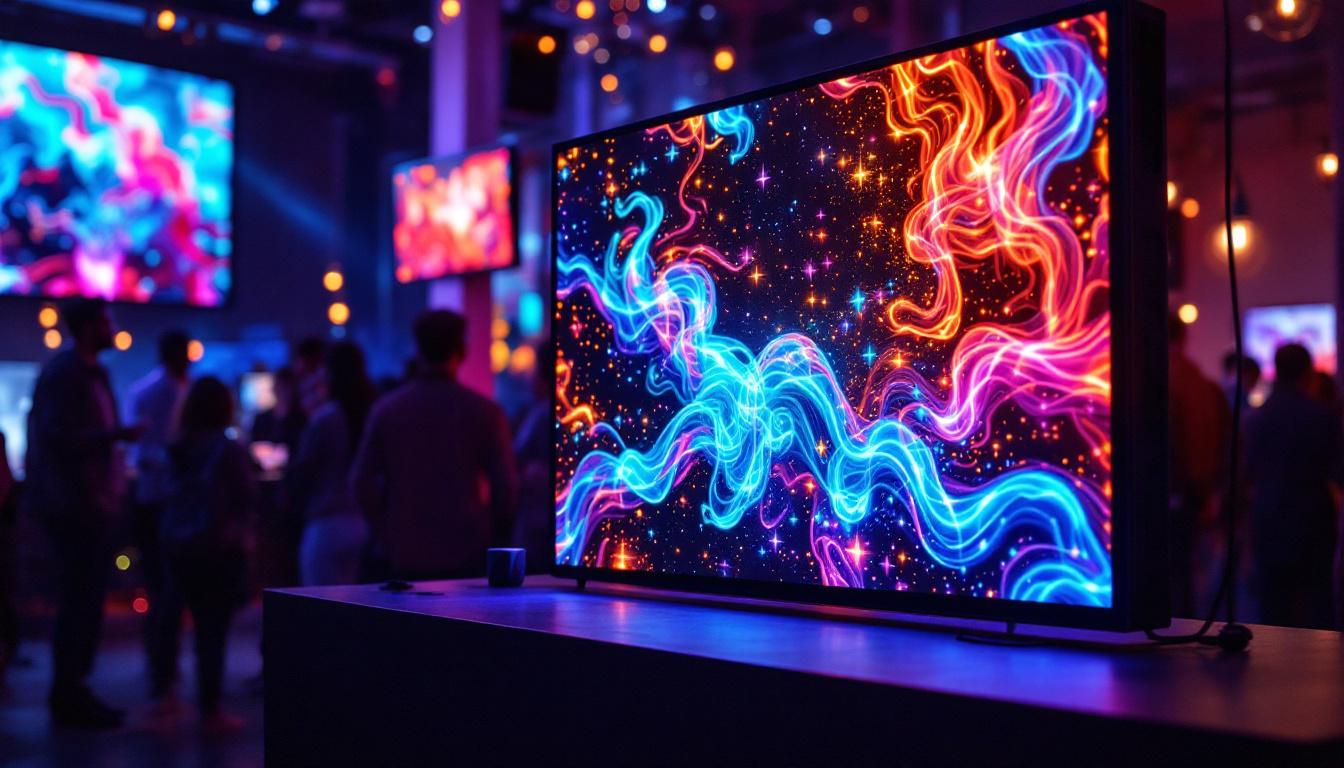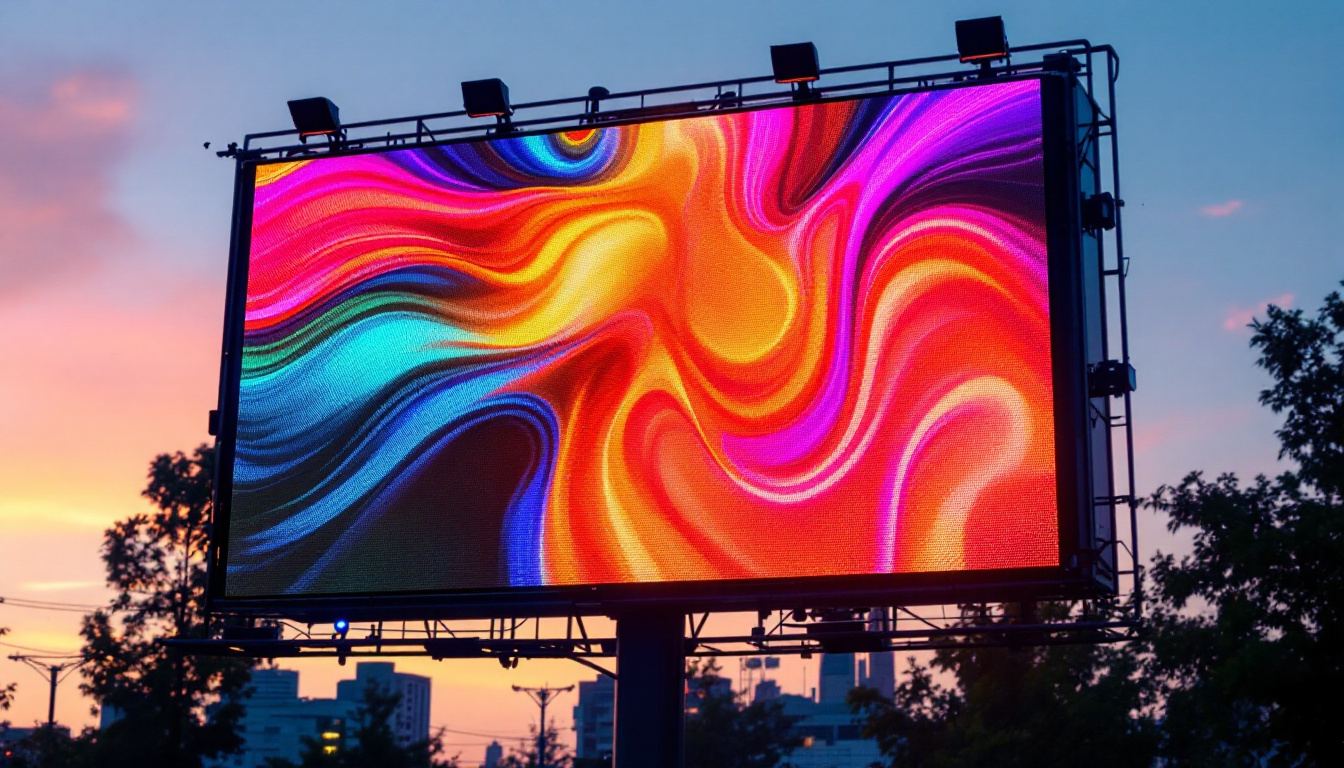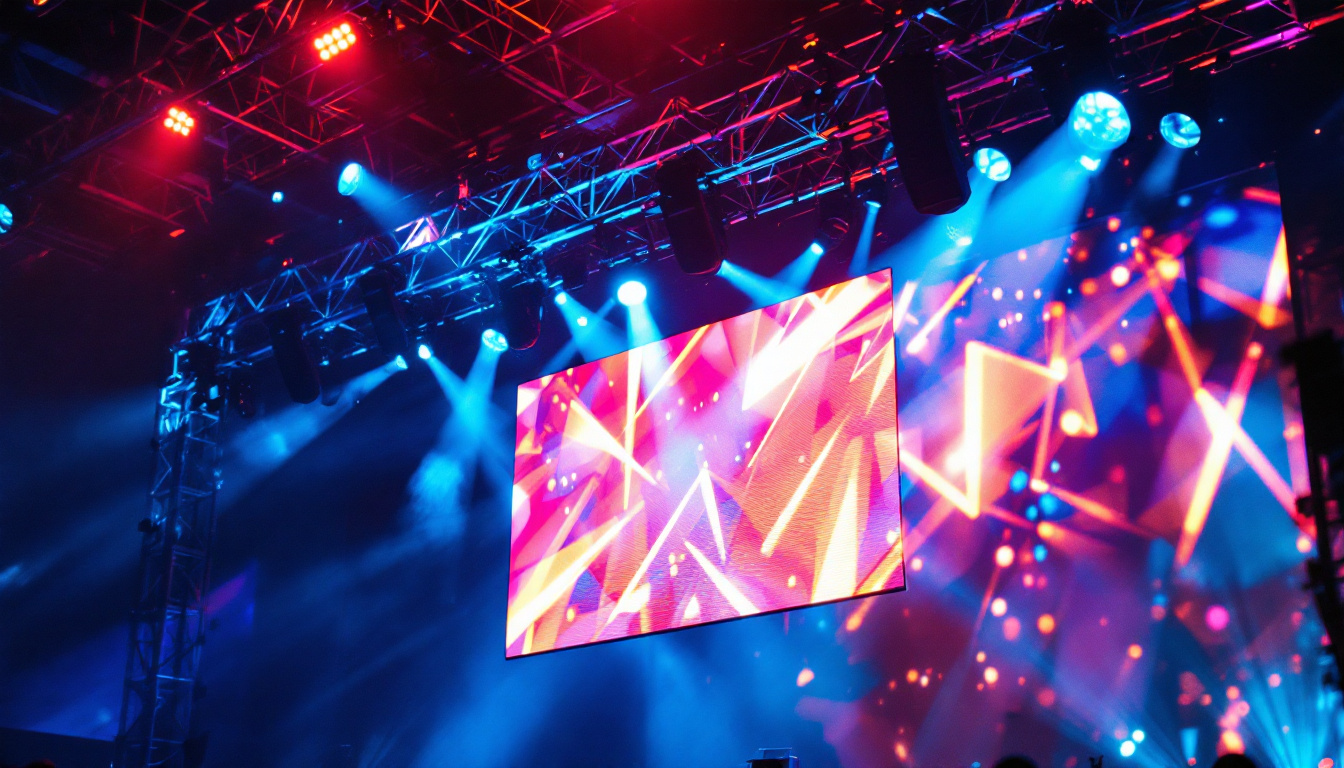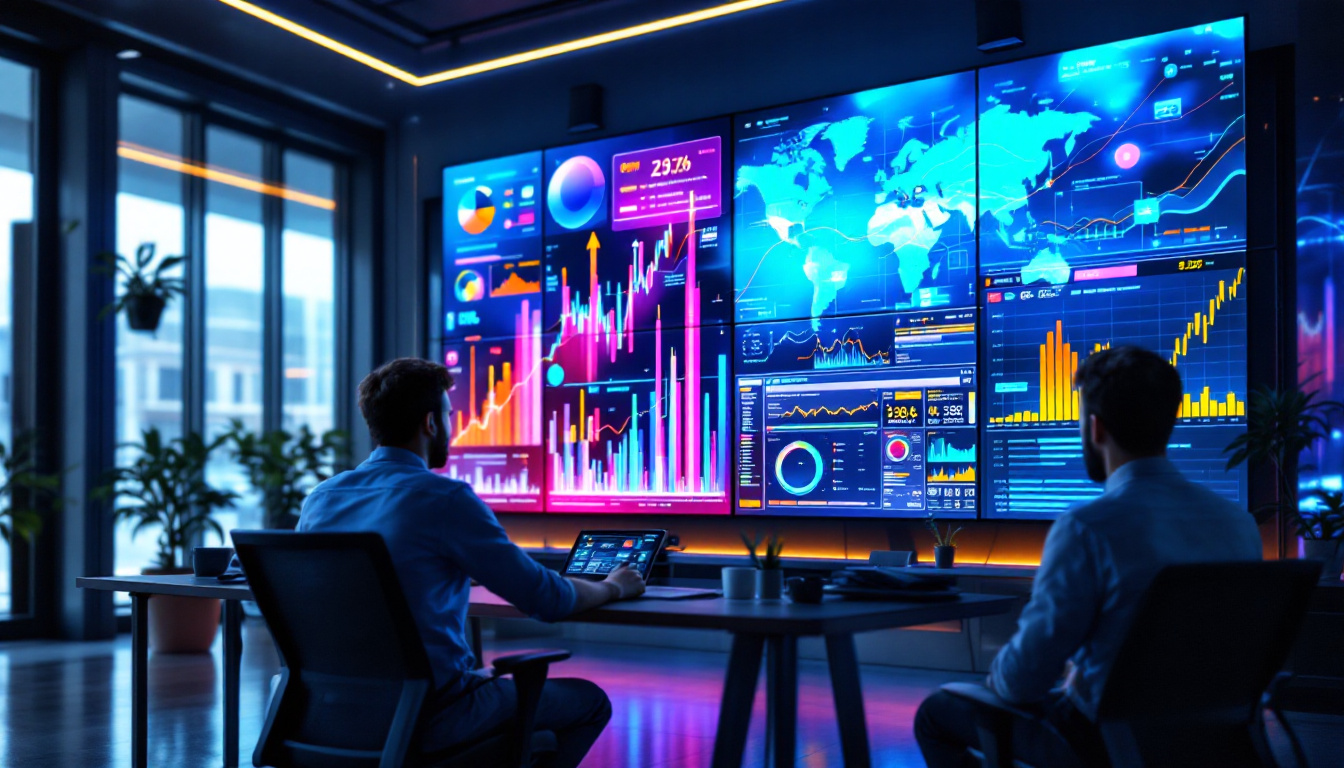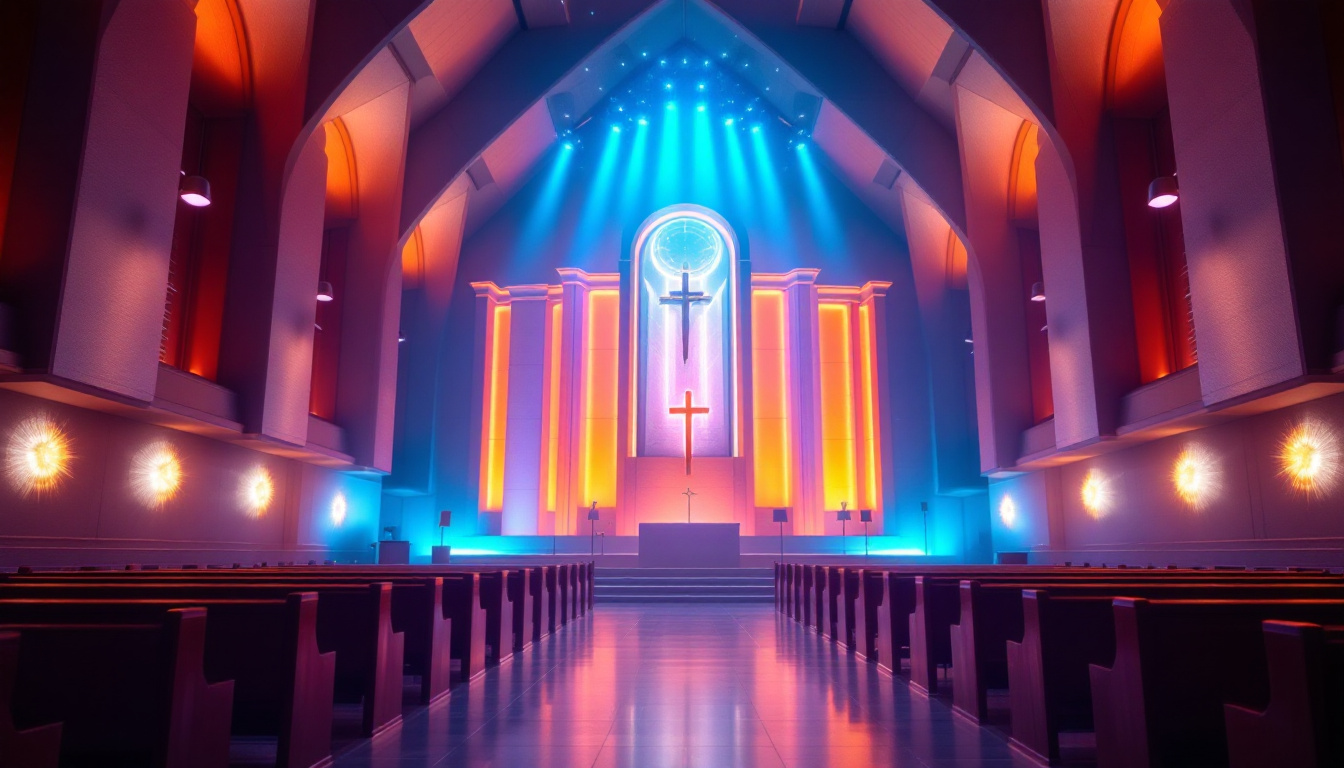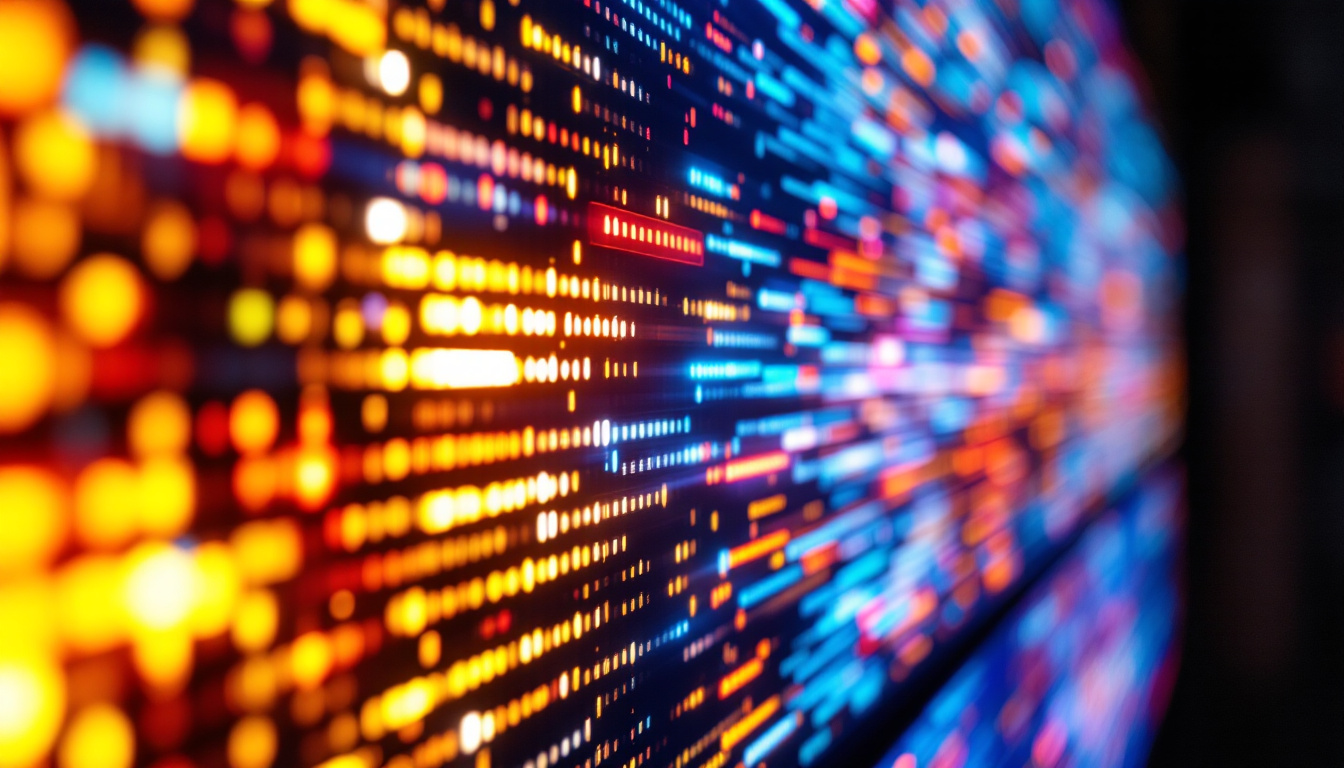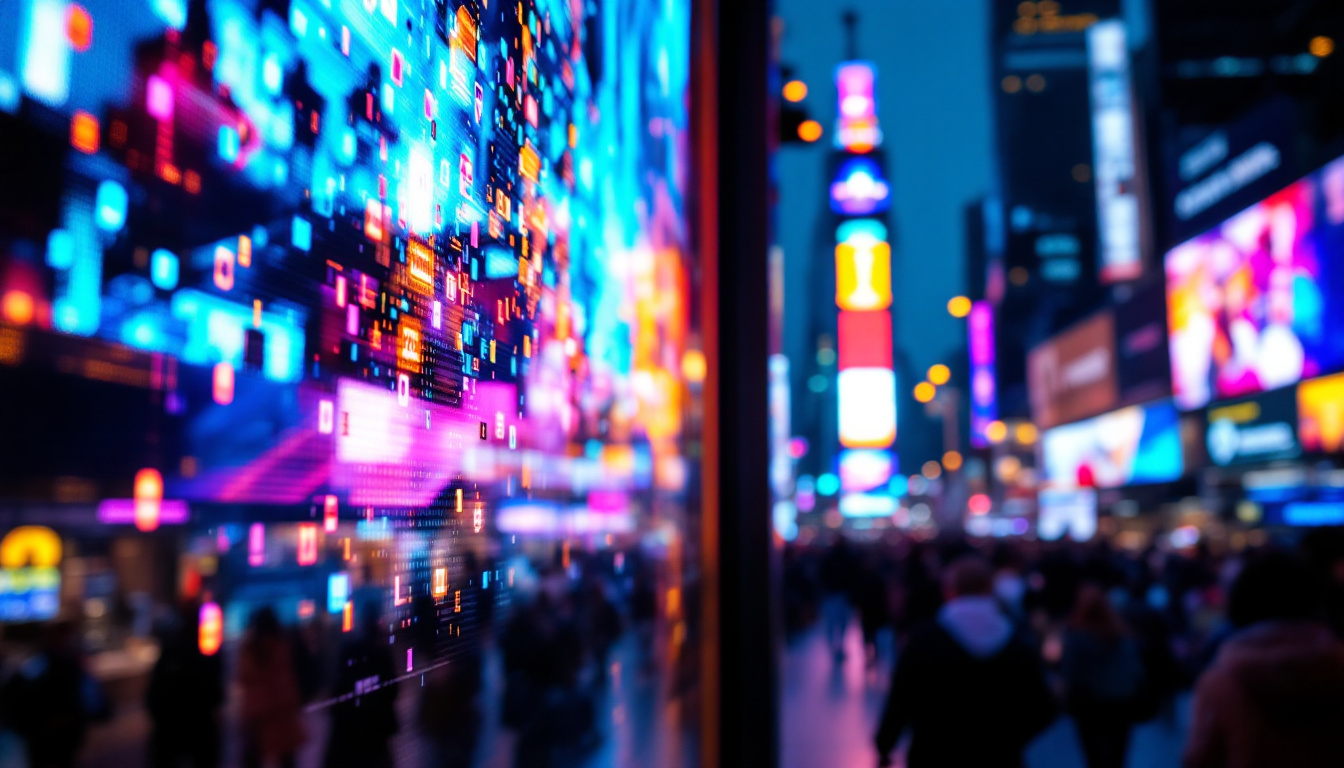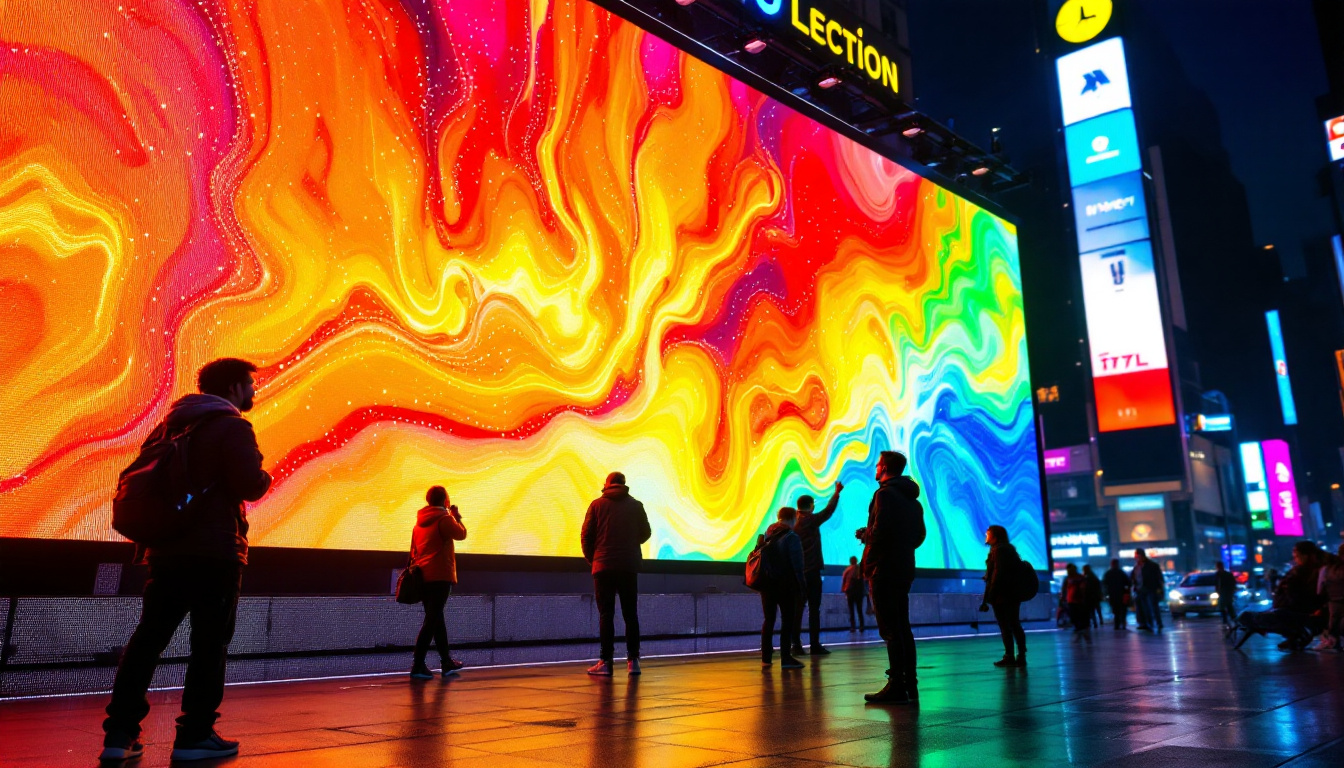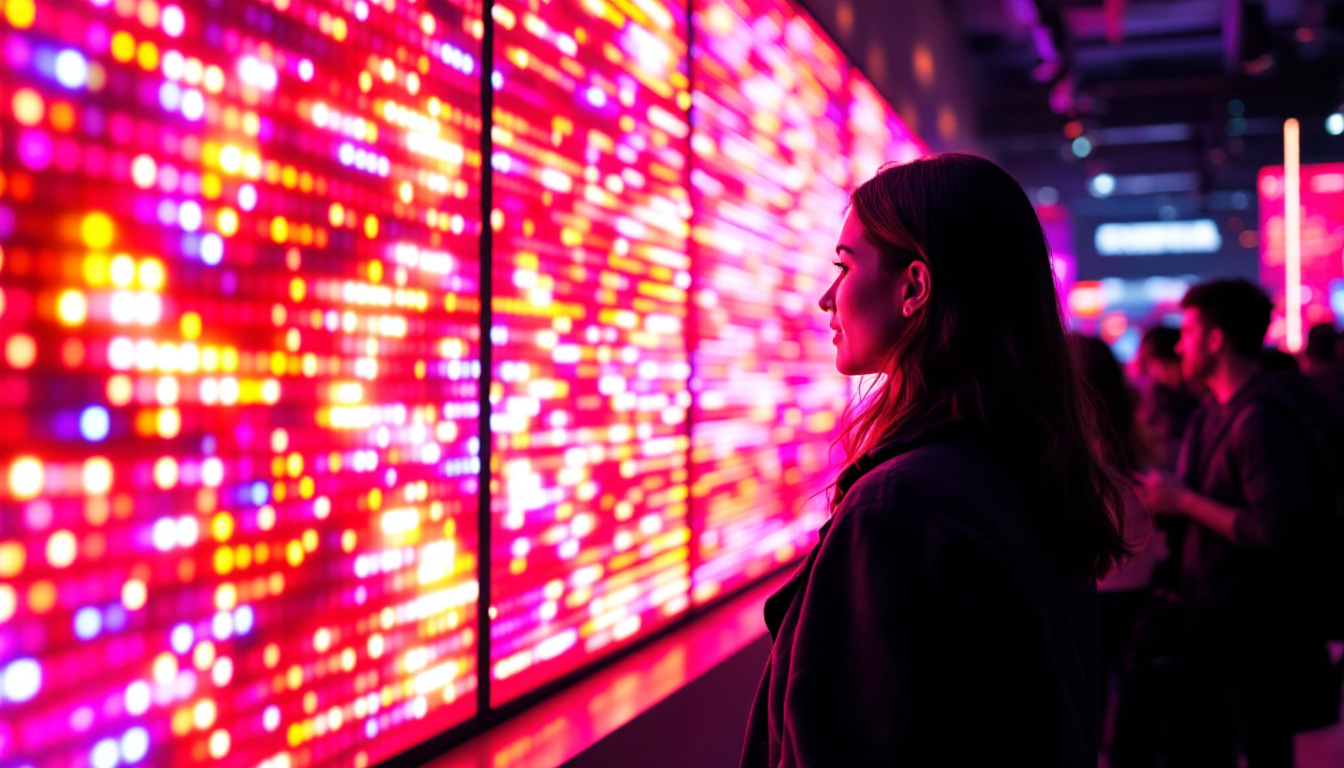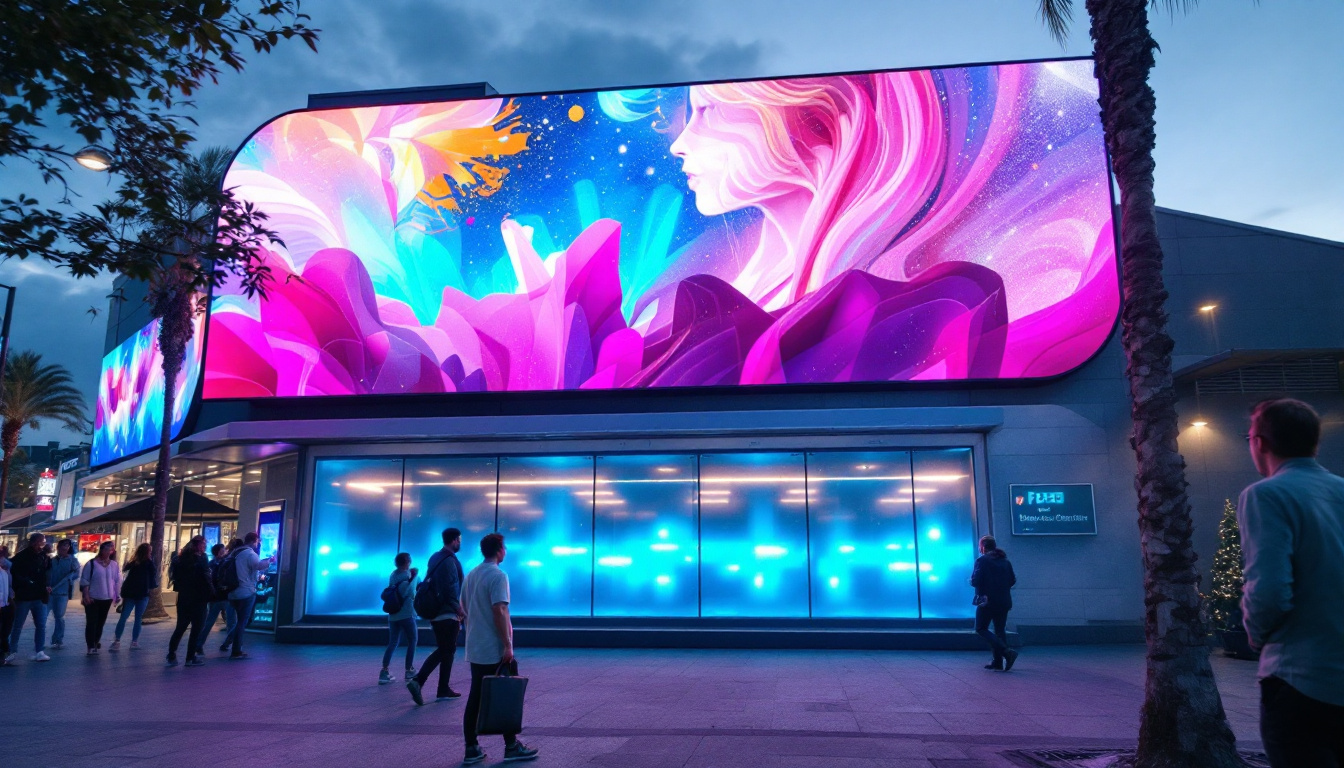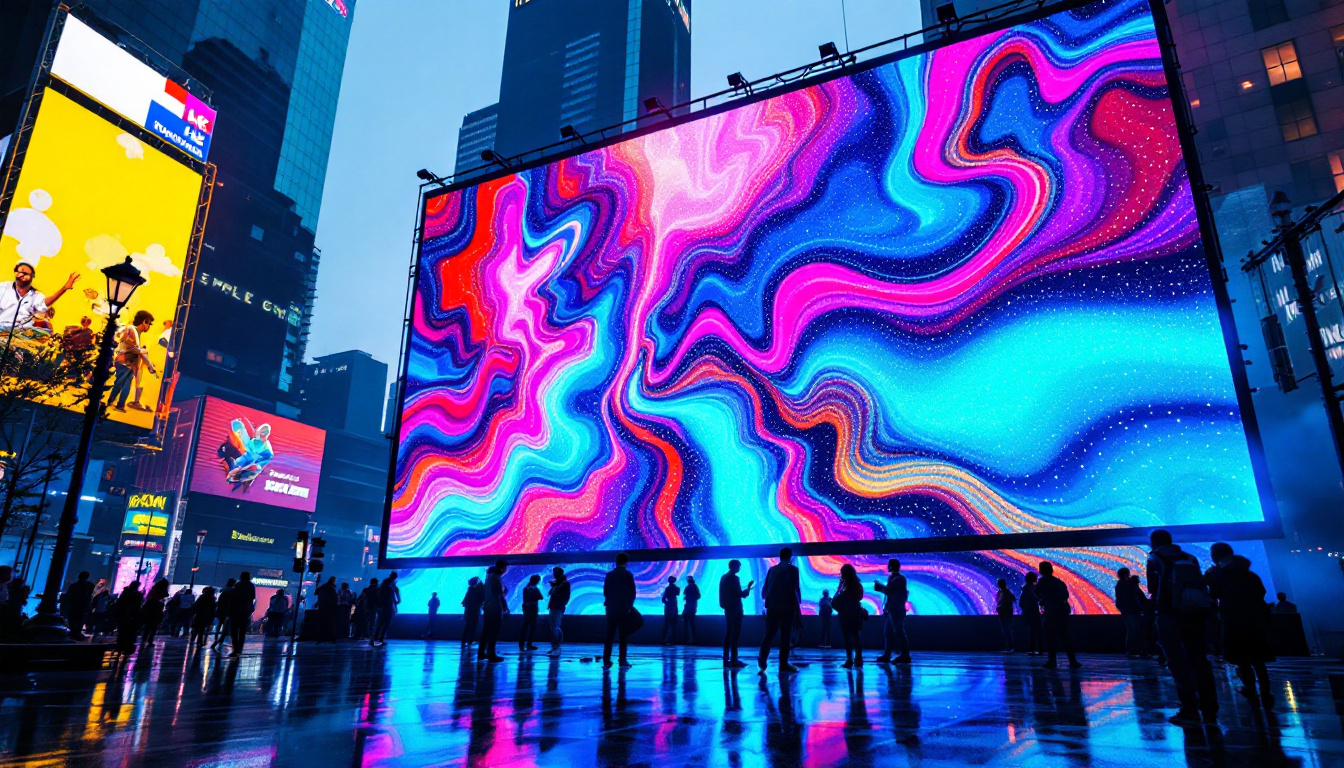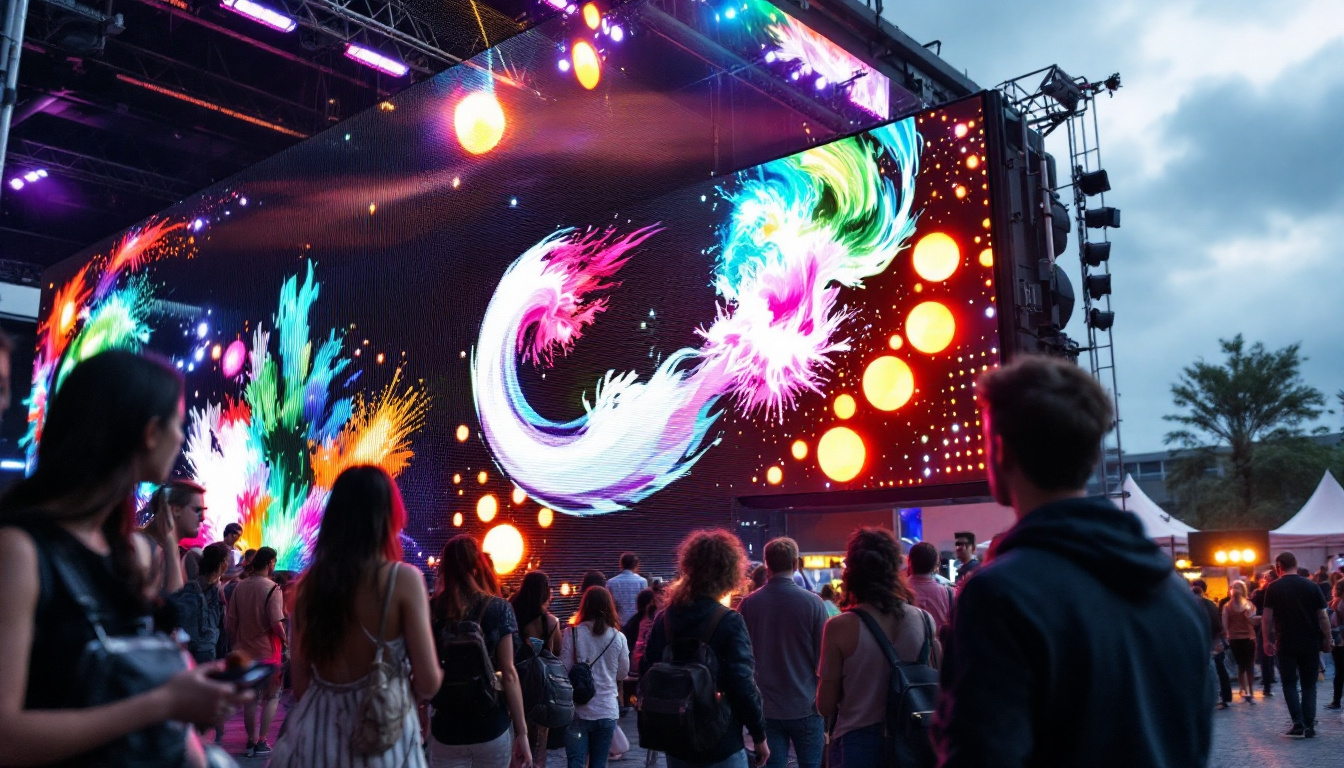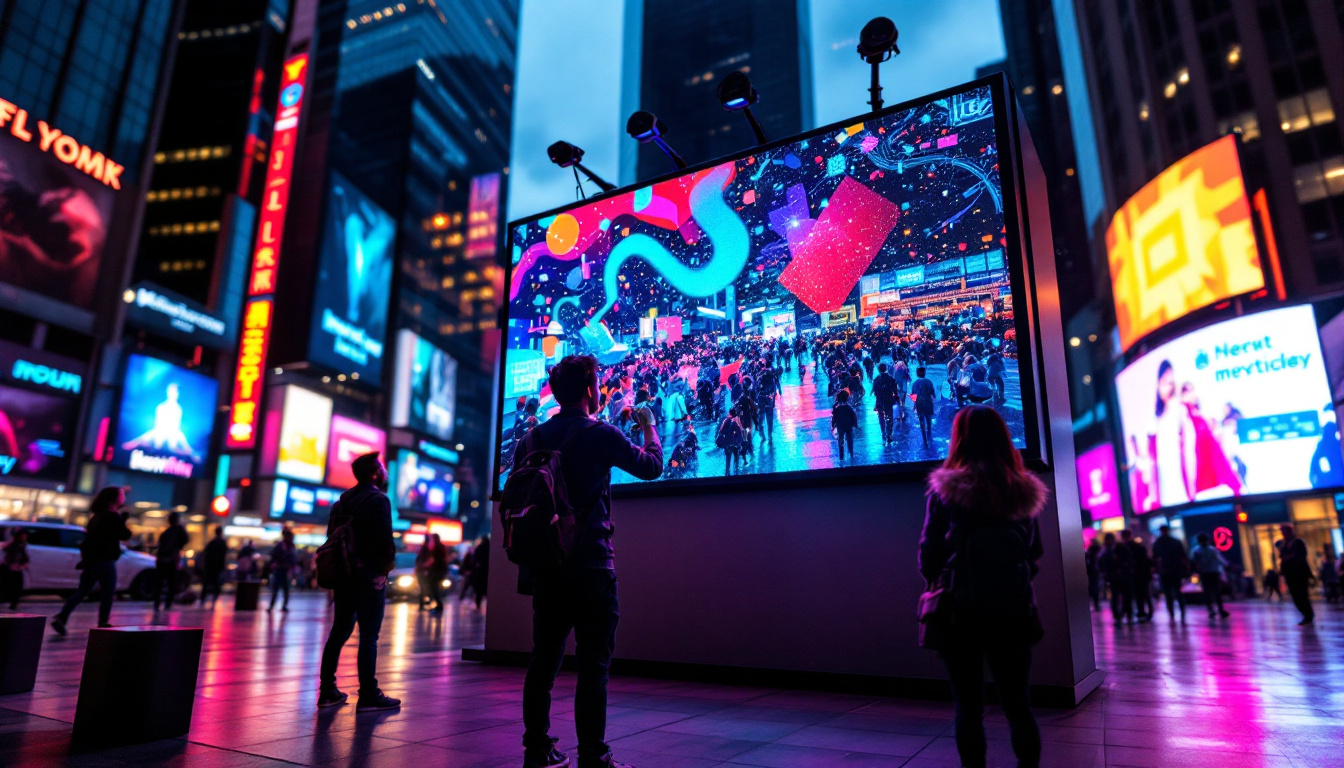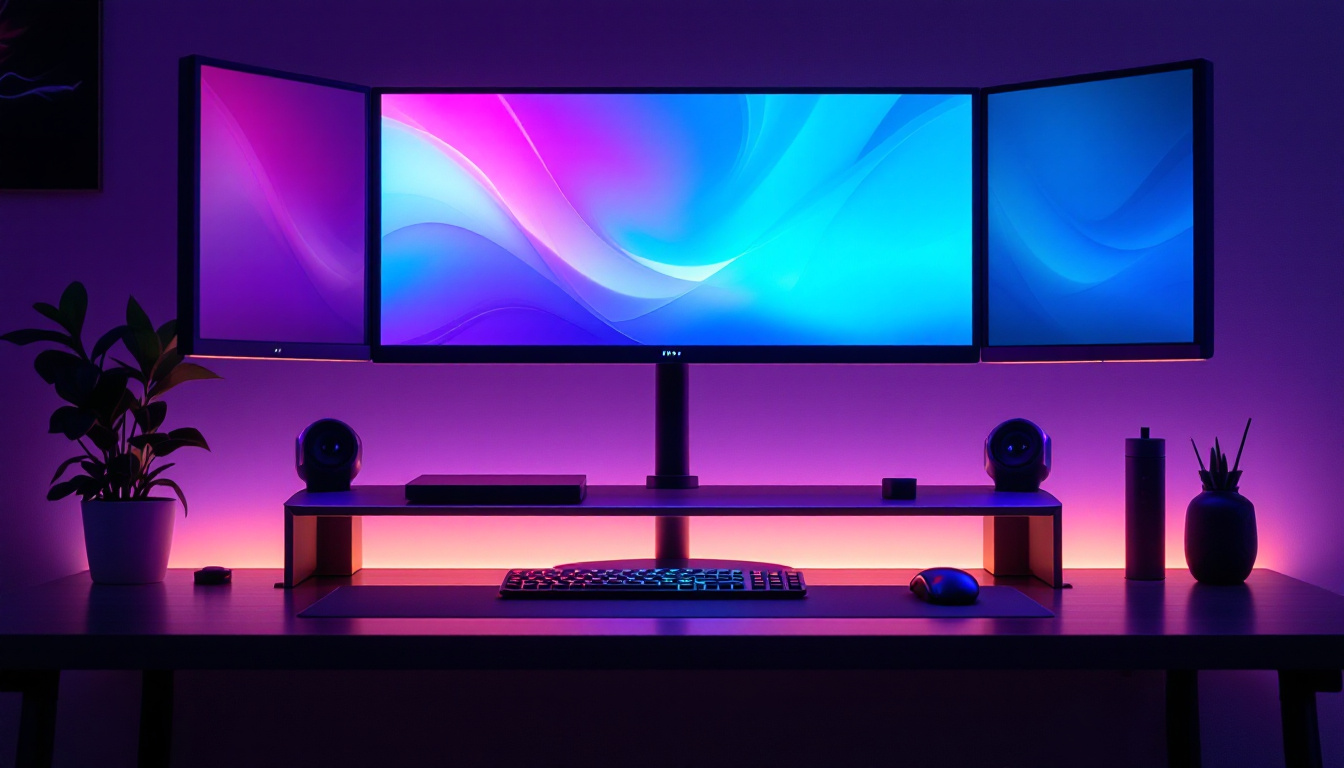In recent years, the concept of TV wall art has transformed how people perceive and utilize their televisions. No longer just a device for watching shows and movies, the television has evolved into a centerpiece of home decor, particularly with the advent of LED displays. This article delves into the intricacies of LED displays, exploring their technology, applications, and the aesthetic possibilities they offer for modern living spaces.
Understanding LED Technology
LED, or Light Emitting Diode, technology has revolutionized the display industry. Unlike traditional LCD or plasma screens, LED displays utilize a series of tiny diodes to produce light, resulting in brighter images and more vibrant colors. This section will break down the core components of LED technology and its advantages over other display types.
How LED Displays Work
At the heart of LED technology is the semiconductor material that emits light when an electric current passes through it. The arrangement of these diodes can vary, leading to different types of LED displays, such as edge-lit and full-array. Edge-lit displays use LEDs positioned along the edges of the screen, while full-array displays feature a grid of LEDs behind the screen, providing better contrast and uniformity in brightness.
Moreover, the color accuracy of LED displays is enhanced through the use of filters and backlighting techniques. This allows for a broader color spectrum, making images appear more lifelike and immersive. The result is a viewing experience that captivates audiences, whether for gaming, watching movies, or enjoying art. Additionally, advancements in LED technology have led to the development of OLED (Organic LED) displays, which offer even deeper blacks and improved viewing angles, further elevating the visual experience.
Advantages of LED Displays
One of the most significant advantages of LED displays is their energy efficiency. Compared to traditional displays, LED screens consume less power, making them a more environmentally friendly option. Additionally, they have a longer lifespan, reducing the frequency of replacements and waste.
Another benefit is their versatility in design. LED displays can be made thinner and lighter than their predecessors, allowing for innovative installations that blend seamlessly into any environment. This flexibility opens up new possibilities for creative wall art, as TVs can be mounted in unique ways that enhance the overall aesthetic of a room. Furthermore, the modular nature of LED technology allows for the creation of large video walls composed of multiple panels, making them ideal for commercial spaces, advertising, and events where dynamic visuals are essential.
LED technology also plays a crucial role in outdoor displays, where durability and visibility are paramount. Outdoor LED screens are designed to withstand harsh weather conditions and provide high brightness levels to ensure clear visibility even in direct sunlight. This makes them a popular choice for billboards, sports arenas, and concert venues, where engaging visuals can capture the attention of large audiences. As the technology continues to evolve, we can expect even more innovations that enhance both indoor and outdoor viewing experiences, pushing the boundaries of what is possible in display technology.
TV Wall Art: Aesthetic Integration
As televisions become more integral to home decor, the concept of TV wall art has emerged. This trend emphasizes the importance of integrating technology with artistic expression, creating a harmonious balance between functionality and beauty. Here, we explore how LED displays can be transformed into stunning wall art.
Transforming the TV into Art
One of the most exciting aspects of LED technology is the ability to display dynamic content. This feature allows homeowners to transform their TVs into digital canvases, showcasing everything from stunning landscapes to abstract art. Various applications and software enable users to curate their own galleries, changing the displayed artwork to suit their mood or the occasion.
Moreover, some LED displays come equipped with ambient modes that adjust the screen’s brightness and color temperature based on the surrounding light. This not only enhances the viewing experience but also allows the TV to blend into the background when not in use, further emphasizing its role as a piece of art rather than just a screen.
Framing and Mounting Options
The way a TV is mounted can significantly impact its aesthetic appeal. Traditional wall mounts can often detract from the overall design of a room, but innovative mounting solutions can enhance it. For instance, using a frame around the TV can give it the appearance of a traditional painting, making it a focal point in the room.
Additionally, wall-mounted TVs can be combined with shelves or other decorative elements, allowing for a cohesive design that integrates the television with the surrounding decor. This approach not only elevates the visual appeal but also creates a more inviting atmosphere.
Creative Applications of LED Displays
LED displays are not just limited to traditional television viewing; they can be used creatively in various settings. From homes to commercial spaces, the applications of LED technology are vast and varied. This section will explore some innovative uses of LED displays in different environments.
Home Entertainment Systems
In home theaters, LED displays can create an immersive experience that rivals that of a cinema. By utilizing large, high-resolution screens, homeowners can enjoy movies and games in stunning detail. Additionally, integrating surround sound systems with LED displays enhances the overall experience, making it feel as though viewers are part of the action.
Furthermore, the ability to display artwork or ambient scenes when the TV is not in use adds a layer of sophistication to home entertainment systems. This dual functionality ensures that the space remains visually appealing, regardless of whether it’s being used for entertainment or relaxation.
Commercial Spaces and Advertising
In commercial settings, LED displays have become essential tools for advertising and branding. Retailers use large LED screens to showcase products, promotions, and interactive content that attracts customers. The vibrant colors and dynamic visuals of LED technology capture attention and engage potential buyers effectively.
Moreover, LED displays can be used in restaurants, hotels, and event spaces to create captivating environments. From displaying menus to showcasing artwork, these screens can enhance the ambiance and experience for patrons, making them more likely to return.
Challenges and Considerations
While LED displays offer numerous advantages, there are also challenges and considerations to keep in mind. Understanding these factors can help consumers make informed decisions when selecting and integrating LED technology into their spaces.
Cost and Investment
One of the primary considerations when investing in LED technology is cost. Although prices have decreased over the years, high-quality LED displays can still represent a significant investment. It is essential to weigh the benefits against the costs and determine whether the investment aligns with individual needs and preferences.
Additionally, ongoing maintenance and potential upgrades should be factored into the overall cost. As technology advances, older models may require updates to remain compatible with new features and applications, which can incur additional expenses.
Screen Size and Placement
Choosing the right screen size and placement is crucial for maximizing the benefits of LED displays. A screen that is too large for a room can overwhelm the space, while a screen that is too small may not provide an optimal viewing experience. It is essential to consider factors such as room size, viewing distance, and the layout of furniture when selecting a TV.
Moreover, placement can significantly impact the overall aesthetic. Ensuring that the TV is mounted at an appropriate height and angle can enhance both functionality and design. Consulting with professionals or utilizing design software can help homeowners make informed decisions about placement.
Future Trends in LED Displays
The world of LED displays is continually evolving, with new technologies and trends emerging regularly. Staying informed about these developments can help consumers make the most of their investments and ensure their setups remain cutting-edge.
Advancements in Display Technology
Future advancements in LED technology are likely to focus on improving resolution, color accuracy, and energy efficiency. Innovations such as MicroLED and OLED technology promise to deliver even more vibrant colors and deeper blacks, enhancing the overall viewing experience.
Additionally, the integration of artificial intelligence and machine learning into display technology may lead to smarter TVs that can adapt to user preferences and environmental conditions, further enhancing their functionality and appeal.
Integration with Smart Home Systems
As smart home technology becomes increasingly prevalent, the integration of LED displays with other smart devices will likely become more seamless. This could allow for enhanced control over lighting, sound, and even the displayed content, creating a more cohesive and user-friendly experience.
Furthermore, the ability to connect LED displays to social media and streaming platforms can provide users with a more personalized experience, allowing them to curate content that resonates with their interests and lifestyle.
Conclusion
LED displays have transformed the way televisions are perceived and utilized in modern homes and commercial spaces. By combining technology with artistic expression, they offer a unique opportunity to enhance the aesthetic appeal of any environment. As advancements continue to shape the future of LED technology, the possibilities for creative applications and integration will only expand.
Whether used as a centerpiece for home entertainment or as a dynamic advertising tool in commercial settings, LED displays represent a fusion of functionality and art. Embracing this technology can lead to a more engaging and visually stunning experience, making it an essential consideration for anyone looking to elevate their space.
Discover the Art of Visual Excellence with LumenMatrix
Ready to transform your space into a captivating display of innovation and artistry? LumenMatrix invites you to explore a world where technology meets creativity. As a pioneer in LED display technology, we offer an array of solutions that bring your vision to life. From the comfort of your home to the buzz of commercial environments, our Indoor and Outdoor LED Wall Displays, Vehicle LED Displays, and more, are designed to elevate your visual experience. Check out LumenMatrix LED Display Solutions and join the revolution of visual communication today.

